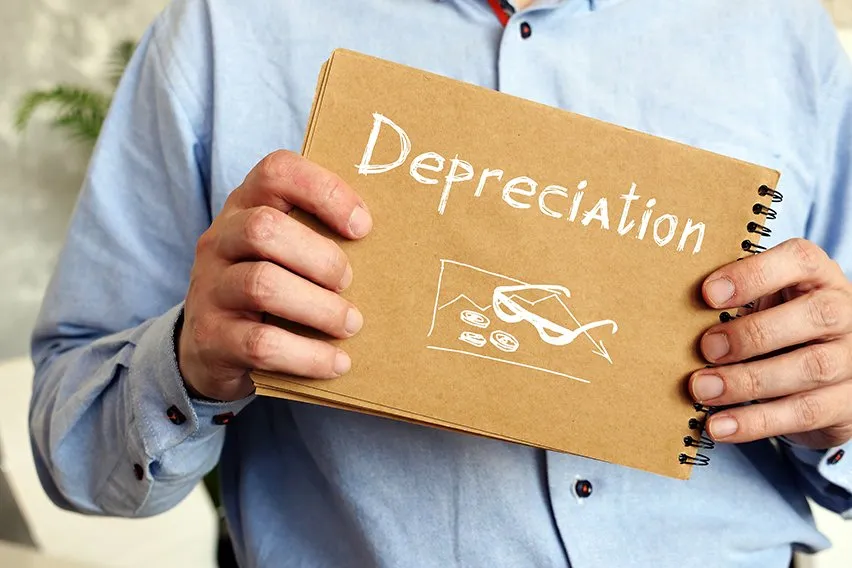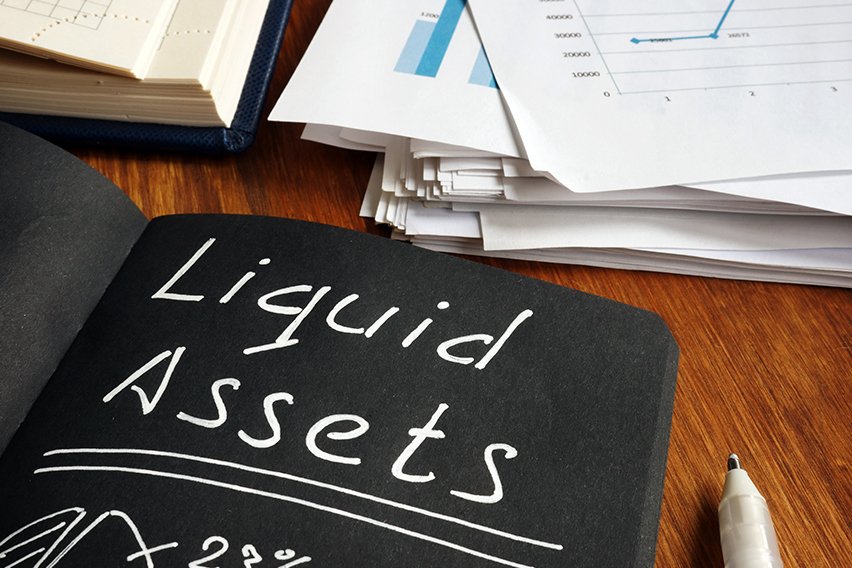What Is Depreciation: Definition, Types, and Calculation

Fixed assets like buildings, vehicles, rental properties, commercial properties, and production equipment all decline over time. Depreciation is an accounting method used to calculate the decrease in value of a fixed asset while it’s used in a company’s revenue-generating operations.
After an asset is purchased, a company determines its useful life and salvage value (if any). Then, the asset cost is depreciated over time based on its useful life.
Understanding depreciation is important for getting the most out of your assets at tax time. You can claim depreciation to reduce your total taxable income, saving you money on your taxes.
Measuring depreciation is important as it allocates the cost of an asset over the periods that the company benefited from its use (matching revenues and expenses). We’ll explore different ways to calculate steady and accelerated depreciation so you can measure depreciation on different types of assets. We’ll also take a look at how depreciation relates to taxation and accounting, what assets you can claim for depreciation, and common causes of asset depreciation.
Key Takeaways
- Depreciation is the decline in book value of an asset over its usable life.
- You can claim depreciation as a tax deduction to reduce your total taxable income.
- You can only claim depreciation on assets that you own and use exclusively for business purposes.
- There are different methods to calculate steady depreciation and accelerated depreciation.
- The most common cause of depreciation is wear and tear.
Table of Contents
- What Is Depreciation?
- Depreciation and Taxation
- Depreciation Practices in Accounting
- Which Assets Can You Depreciate?
- What Is a Depreciation Schedule?
- How To Calculate Depreciation?
- What Are the Causes of Depreciation?
- Conclusion
- Frequently Asked Questions
What Is Depreciation?
Depreciation is the decline in the book value of a fixed asset over time. When you have a fixed asset like a vehicle, building, or piece of equipment, these things will naturally suffer some wear and tear over time. Depreciation measures the economic effect of this wear and tear and allows you to allocate that change in value over the asset’s usable life.
Depreciation continues over the useful life of the asset. In some cases, an asset may decline in value at a steady rate, while others may decline more rapidly in years where they see heavier use.

Depreciation and Taxation
Understanding depreciation is important for calculating its impact on your taxes. When the value of a fixed asset declines, you can claim that depreciation as a tax deduction for your business. This helps reduce your total taxable income.
There are several rules for the tax purposes when claiming depreciation as a deduction: 1
- The asset must be property that you own
- The asset must be used for your business to produce income
- You need to be able to determine the useful life of the asset
- The asset’s useful life must be longer than 1 year
You can start calculating depreciation when the fixed asset is placed in service, meaning it is ready for use in your business, even if you haven’t started using it yet. For example, if you buy a machine for your company, you can begin calculating depreciation when it arrives on site the same year, even if you don’t use it until the next year.
Depreciation ends when the asset reaches the end of its usable life or when you sell it.
Depreciation Practices in Accounting
In accounting, depreciation is recorded as an expense that gradually reduces the book value of an asset. Since an asset benefits your business over an extended period, this expense is recorded over time to allocate the asset’s cost over the periods it benefited the company.
Depreciation isn’t an asset or a liability itself—it’s a method used to measure the change in the carrying value of a fixed asset. It’s recorded as a contra-asset under the assets section of your balance sheet. You’ll usually record annual depreciation so you can measure how much to claim in a given year, as well as accumulated depreciation so you can measure the total change in value of the asset to date.
Which Assets Can You Depreciate?
In general, for an asset to qualify as a depreciable property it must be something you own in its entirety and use exclusively for your business or income. The following assets can be depreciated:
Property
If you own a building that you use to make income, you can claim the depreciation on this property. This includes rental properties as well as commercial buildings. If you work from home, you may also be able to claim depreciation on the part of your home that you use exclusively for business, such as a home office.
Note that you cannot claim depreciation on land, as it is not considered to wear out.
Vehicles and Equipment
If you use a vehicle or piece of equipment exclusively for business, you can claim depreciation on that asset. However, if you drive a car for work and for personal use, you can only claim depreciation on the business portion of your tax return (for example 60% of the cost).
Intangible Assets
Some purchased intangible property can be amortized, including:
- Patents and copyrights
- Readily available and non-exclusive computer software
Internally developed intangible assets are expensed as incurred (R&D costs).
What Is a Depreciation Schedule?
A depreciation schedule is a schedule that measures the decline in the value of a fixed asset over its usable life. This helps you track where you are in the depreciation process and how much of the asset’s value remains.
Your depreciation schedule will vary slightly depending on which calculation method you use. In general, a depreciation schedule will contain 3 columns:
- Column 1: Record the depreciation you expect the asset to incur each year. For the fixed-line method and other continuous depreciation methods, this number is the same every year.
- Column 2: Records the accumulated depreciation at the end of every year
- Column 3: Shows the asset’s net book value at the end of every year
How To Calculate Depreciation?
There are several methods for calculating depreciation, depending on whether your asset depreciates at a constant rate or an accelerated rate. We’ll explore 5 of the most common methods for how to calculate depreciation:
Straight-Line Depreciation
The straight line method is one of the easiest ways to calculate constant depreciation. This is a good formula to use for things like commercial and rental property, which typically depreciates at a steady rate. The formula is:
Annual Depreciation = (Asset Value – Salvage Value) / Useful Life in Years
Asset value is the cost or purchase price you initially paid for the asset
Salvage value is the amount you expect to be able to obtain for the asset at the end of its usable life.
Subtract salvage value from asset cost to get the total value that this asset will provide you over its lifespan.
Divide this by the estimated useful life in years to get the amount your asset will depreciate every year.
Double-Declining Balance Depreciation
The double-declining balance system calculates depreciation for an asset that depreciates at an accelerated rate. The 2-step formula is as follows:
Double-Declining Balance Method Rate = (100% / Useful Life In Years) x 2
Depreciation = Depreciable Amount x Double-Declining Balance Method Rate
The ‘depreciable amount’ refers to the cost of your asset. This formula will give you greater annual depreciation at the beginning portion of the asset’s useful life, with gradually declining amounts each year until you reach the salvage value.
Sum-of-Years-Digits Depreciation
Sum-of-years-digits is another accelerated depreciation method that gives greater annual depreciation in an asset’s early years.
Annual Depreciation = Depreciable Base x (Inverse Year Number / Sum of Year Digits)
‘Depreciable base’ is the total expected value of the asset. If your asset has no salvage value then this is the amount that you paid for the asset. If it has a salvage value, then the depreciable base is the amount you paid minus the salvage value.
To get the sum of year digits, add together all the digits of the asset’s expected life. For example, an asset with a 5-year life would give you 5 + 4 + 3 + 2 + 1 = 15.
Inverse year number is the first year of expected life, starting from the greatest digit, divided by the total years. In year 1 this would be (5 / 15), in year 2 it would be (4 / 15), and so on.
Units of Production Depreciation
The units of production method is helpful for assets whose usable life depends on the output they produce, rather than on a continuous rate. This includes things like vehicles, which decline more rapidly in years when you drive a lot. The formula is:
Depreciation = (Number of Units Consumed / Total Units To Be Consumed) x Depreciable Base
Total units to be consumed is the amount of value you expect from the asset, measured in units. For example, if you purchase a machine and you expect it to make 100,000 products, you would have 100,000 total units to consume.
Number of units consumed is the amount that you used in a given year—in this case, perhaps your machine produced 30,000 products, so you would have used 30,000 units.
Modified Accelerated Cost Recovery System (MACRS)
The Modified Accelerated Cost Recovery System, or MACRS, is another method for calculating accelerated depreciation. This works well for vehicles, equipment, and other physical assets, but it cannot be used for intangible assets. The General Depreciation System (GDS) is the most common method for calculating MACRS.
The IRS has 9 property classes for depreciable assets. Find the recovery period of your asset from the IRS classifications in IRS Chapter 4 1 and your asset’s depreciable base, then consult IRS Publication 946 Appendix A to find the MACRS depreciation rate. MACRS calculations tend to be a more complicated method for calculating depreciation and may benefit from the support of a tax professional.
What Are the Causes of Depreciation?
Depreciation allocates the cost of a tangible asset over its useful life and is used to account for declines in book value. The causes of depreciation are:
Wear and Tear
Wear and tear is the most common cause of depreciation for a fixed asset. Any asset gradually breaks down over time as parts wear out and need to be replaced. Some assets like buildings tend to wear and tear at a steady rate, and are measured with formulas like the straight-line method. Others depreciate more quickly from heavy use and use formulas like the units of production method. In many cases the manufacturer will provide you with an estimate of the asset’s usable life, measured in years, number of miles driven, or number of units produced.
Note that your conditions and location can also have different wear and tear effects on your asset. For example, buildings and equipment in areas with strong weather may see more rapid wear and tear from rust, water, and environmental damage.
Usage Right
A fixed asset such as software or a database might only be usable to your business for a certain period of time. Its lifespan terminates when the usage rights expire. Asset needs to be fully amortized by the end of the usage period.
Inefficiency/Obsolescence
When more efficient equipment becomes available, old equipment might become obsolete. This reduces the usability of the original equipment.

Conclusion
Depreciation measures the decline in the value of a fixed asset over its usable life, allowing businesses to spread out the cost of that asset over several years. To claim depreciation, you must own the asset and use it for income-producing activity. Understanding depreciation helps you predict the value of your asset and claim the relevant tax deductions to reduce your total taxable income.
Software makes it easy to track and calculate the depreciation of your small business assets. Track your mileage for vehicles with the mileage tracking app, organize your assets to measure depreciation, and make tax season a breeze with automated financial report generation. Try FreshBooks free to streamline your depreciation calculations today.
FAQs About Depreciation
Learn more about the benefits of claiming depreciation and depreciation examples with frequently asked questions about depreciation.
Is depreciation an expense or income?
Depreciation is listed as an expense on your income statement since it represents part of the asset cost allocated to the period. It’s not an asset or a liability itself, but rather an accounting tool used to measure the change in value of an asset.
Is depreciation a good or bad thing?
Depreciation can be helpful because it enables a business to spread out the cost of an asset over the asset’s usable life. Depreciation allows you to reduce your taxable income by claiming depreciation as an expense, minimizing your total tax bill.
How much depreciation can I claim?
The amount of depreciation you can claim in a given year depends upon your taxable income and the dollar limit for the depreciating asset. In most cases, you can claim all the depreciation of an asset as long as you allocate it over the asset’s life.
What is an example of a depreciation?
An example of depreciation would be a vehicle that declines in value as you drive it. The longer you own it and the more you drive it, the more wear and tear the vehicle receives until it eventually reaches the end of its usable life.
What happens if you don’t depreciate?
If you don’t depreciate your asset, you won’t be able to claim the full benefit of the depreciation tax deduction. This deduction relies on claiming annual depreciation—since you can’t claim the full depreciation amount all in one year, you’ll lose out on potential tax benefits.
Additionally, you will fail to properly allocate the cost of your asset over its useful life.
Article Sources
- How to Depreciate Property, IRS Publication 946
About the author
Sandra Habiger is a Chartered Professional Accountant with a Bachelor’s Degree in Business Administration from the University of Washington. Sandra’s areas of focus include advising real estate agents, brokers, and investors. She supports small businesses in growing to their first six figures and beyond. Alongside her accounting practice, Sandra is a Money and Life Coach for women in business.
RELATED ARTICLES


 What Is Accounting? The Basics, Explained
What Is Accounting? The Basics, Explained What Is Management Accounting?
What Is Management Accounting? What Are Liquid Assets? A Primer for Small Businesses
What Are Liquid Assets? A Primer for Small Businesses Allowance for Doubtful Accounts: Deduction Technique Explained
Allowance for Doubtful Accounts: Deduction Technique Explained Closing the Books: Basics & 8 Steps Guide
Closing the Books: Basics & 8 Steps Guide  When Should I Hire an Accountant
When Should I Hire an Accountant